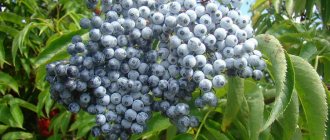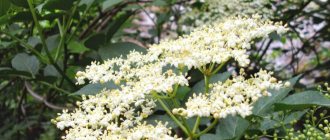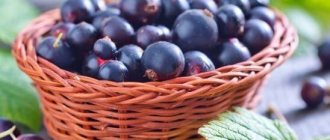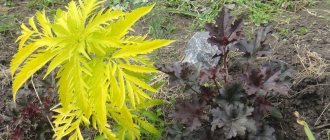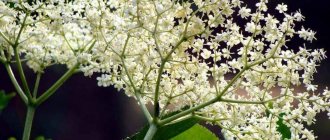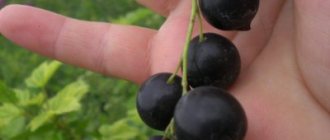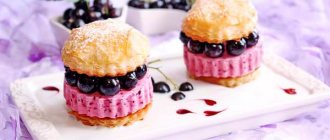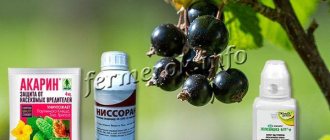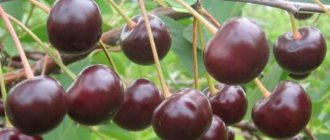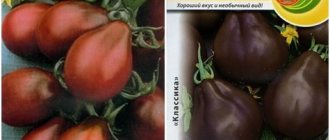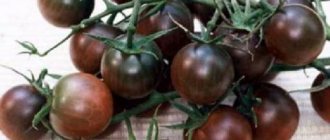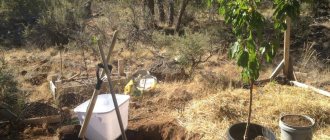Description of black elderberry Aurea
Elderberry grows in temperate and subtropical zones as a shrub or small spreading tree. The culture includes more than 15 species distributed throughout Russia, which include decorative forms of black-fruited representatives and shrubs with red berries.
One of the varieties in demand for cultivation is the black elderberry Aurea, shown in the photo. Characteristic features of deciduous shrubs:
- It reaches a height of 3 m, the main trunk is thick and dark brown, young shoots are light green. The dense, fast-growing crown resembles a dome and requires constant pruning to maintain its shape.
- The leaves of the plant are odd-pinnate, opposite, yellow in color, and become dark green by autumn. They belong to the complex category and have 6 leaves. In an elongated oval shape, reaching up to 25 cm. The edges are uneven with many well-defined teeth.
- The flowers are small, light beige in color, collected in paniculate inflorescences, and are formed in the upper part of the young shoots.
- The berries are a rich purple color closer to black, small with a diameter of up to 6 mm. The drupe fruit is edible only during biological ripeness.
Black elderberry is grown throughout the central zone, southern regions, and the North Caucasus.
A variety of chokeberry plumosa (pinnate structure) includes the Canadian elderberry Aurea (S. canadensis). Outwardly it looks like black, but there are also distinctive features:
- differs in height, Canadian is about 1 meter taller;
- the inflorescences are large, collected in umbrella-shaped flat panicles with a diameter of 20 cm;
- flowers are white, large;
- the crown is less dense;
- leaves are compound, consist of 7 leaves 30 cm long;
- purple fruits measuring 10 mm.
The culture has a specific pungent odor. It grows quickly and bears fruit at the age of 2 years. The Canadian elderberry variety is less resistant to low temperatures compared to the black Aurea.
The red-fruited representative of the elderberry species, the elderberry racemosa Aurea (Sambucus racemosa, Sambucus racemosa Plumosa Aurea), is grown only for the purpose of designing the territory:
- low-growing shrub (2–2.5 m) with a wide, oval, dense crown;
- the leaves are light green, changing color to bright yellow in autumn;
- Elderberry blooms in early May, after 14 days the bush is covered with scarlet clusters;
- fruits contain a high concentration of hydrocyanic acid;
- frost-resistant variety.
Red elderberry Aurea has a sharp, unpleasant odor that repels rodents and insects, so it is recommended to plant the plant near fruit trees and vegetable crops. For design purposes, it is well suited for border decoration and as a single plant. Does not have decorative varieties. It grows quickly, requires constant formation of the bush, and is demanding on watering. Unlike black-fruited representatives of the elderberry species, red plumosa Aurea is not cultivated on a commercial scale, since the fruits are unsuitable for human consumption.
It is found throughout Russia, except in regions with harsh winters.
Features of elderberry pruning
All types, forms and varieties of elderberry that were discussed have a number of advantages when grown using the coppice method . This means that the plants are subjected to radical pruning annually or once every 2-3 years (“planted on a stump”), leaving only stumps about 10 cm high. In this case, the elderberry produces abundant growth. The bush becomes denser, the shoots are stronger (they grow 1.5-2 m per season), large and healthy leaves grow on them. This is especially important for varieties with unusually colored leaf blades, which, after such radical pruning, acquire a more intense color.
Elderberry will benefit from severe pruning every 2-3 years. This is also important for species that freeze slightly in central Russia - for example, black elderberry . If you don’t prune, nature will do it for you, using winter frosts as pruning shears. When pruned, many plants manage to grow, bloom and even set fruit, i.e. they behave like herbaceous perennials, biologically remaining shrubs. For frost-resistant species ( red elderberry ), this is a good anti-aging pruning that has a beneficial effect on the appearance of the plant. It is interesting that the British, who do not have “freezing” among the elderberry species, nevertheless practice regular pruning in order to increase the decorative appearance of the bushes. What's stopping us?
Characteristics of the variety
The reason for the popularity of growing varieties of black elderberry is the plant’s unpretentiousness in care, exotic appearance, and gastronomic value of the fruit.
Drought resistance, frost resistance
A moisture-loving plant, needs periodic watering, drought resistance is average. Lack of water affects the size of the fruit and the density of the crown. The frost resistance of the variety has made it possible to grow black elder Aurea in areas with a temperate climate. If the temperature is expected to drop, it is recommended to insulate the root system. Frozen young shoots are completely restored in the spring. The minimum temperature for elderberry is -30 °C.
Productivity and fruiting
The photo shows the elderberry plumosa Aurea. This is a self-fertile crop, with peak yield occurring in the fifth year after planting. The number of berries from a bush is lower, from a tree is higher. On average, the following is collected from one crop:
| Growth time (year) | Quantity per unit (kg) |
| 1 | 1 |
| 2 | 3 |
| 3 | 11 |
| 4 | 18 |
| 5 | 20 |
Elderberry ripens by mid-September.
Attention! You can harvest only after the fruits have fully ripened; unripe berries are toxic.
The taste of black elderberry fruits is sweet and sour, with a bright, specific aroma. With prolonged drought, the berries lose their elasticity and become baked. The fruits of the black variety are well attached to the stalk; after ripening, they remain on the bush for a long time and do not fall off.
Area of application of fruits
Aurea black elderberry is immediately processed after harvesting; the crop is not stored. On the second day, the berries flow and fermentation begins. Transported over short distances in refrigerators at a temperature of +3 °C. Used in the food industry as a natural dye. Suitable for making wine, juice. Used in medicine. Compotes and jams are prepared at home.
Resistance to diseases and pests
The black elderberry variety Aurea is a representative of the wild and has strong immunity against diseases and pests. In rare cases, it is affected by a fungal infection.
Advantages and disadvantages of the variety
Characteristics of the advantages of the plant:
- bright, unusual appearance;
- increased productivity;
- immunity to disease and pests;
- frost-resistant, recovers after freezing;
- grows in one place for many years.
Disadvantages of the variety:
- average heat resistance,
- it is necessary to form a bush,
- has a specific smell,
- the berries do not lie and are poorly transported.
Plant value
Elderberry fruits fully ripen in September, and only then can they be eaten. Red unripe berries are not suitable for eating. The value of the fruit is due to the high content of the following components:
- Vitamin C;
- Carotenoma;
- Sambucin;
- Glucose;
- Fructose;
- Malic acid;
- Tyrosine.
Elderberry is perfectly used in cooking (photo)
Ripe black fruits are used to make jam, juice, and wine. They are of high value in the medicinal industry. Tinctures are made from the berries, which are used to improve immunity, stomach problems, varicose veins, constipation, and to increase the overall tone of the body.
The fruits are widely used in cooking and also as a food coloring.
The foliage, which is often used as tea for colds, is also valuable. In addition, it is an excellent anti-inflammatory and antibacterial agent.
The leaves contain substances that have a sedative and diuretic effect. The bark of the plant is also used in medicine.
When using the plant at home, do not forget that elderberry contains toxins. For this reason, manufacturing technology and dosage must be used strictly according to the recipe, otherwise poisoning with hydrocyanic acid is inevitable.
Planting and caring for black elderberry Aurea
No matter how unpretentious the black elder Aurea may be, cultivation and care are carried out in compliance with the rules of agricultural technology. To do this, you must follow the recommendations.
Recommended timing
The variety can be planted in the spring at the end of April, provided that the ground has warmed up. In autumn, early November. The terms are conditional - each climate zone has its own. The main requirement for autumn planting is that there should be 10 days left before the onset of frost, during which time the elderberry will have time to take root.
Choosing a suitable location
The black Aurea variety prefers illuminated places and also grows in the shade without visual changes in varietal characteristics. A self-fertile plant can grow alone, so pollinators are not taken into account when choosing a location. Soils are recommended: fertile, moist with a neutral content of acids and alkalis.
Selection and preparation of seedlings
For spring planting, select annual seedlings with smooth light green bark. You also need to pay attention to the development of the root system. For autumn, planting material two years old is suitable. The root system should be free of dry fragments. Before placing in the ground, the cuttings of the variety are placed in a growth stimulator solution for 10 hours.
Landing algorithm
Sequencing:
- Prepare a planting hole with a diameter of 50*50 cm and a depth of 0.5 m.
- Top soil, about 4 buckets, is mixed with compost, urea (60 g), superphosphate (200 g).
- One bucket of the mixture is poured onto the bottom of the hole, wood ash is added, the elderberry roots are distributed, and covered with the rest of the soil.
- Water generously from above.
The root circle is mulched with peat.
Aftercare for elderberry
Once placed in the ground, elderberry requires little care:
- Watering is carried out in dry, hot weather twice a week.
- Mulching with compost will be sufficient; fertilizing is not needed.
- Pruning taking into account the final result - a tree or bush of various shapes.
- In the spring, weak dry branches are removed, the crown is cut in half from the existing length.
The formation of the bush is carried out every year. The variety does not need a garter, nor does it require shelter for the winter. The variety is rarely damaged by rodents; animals are repelled by the smell. For preventive purposes, it is recommended to place toxic preparations near the bush according to the instructions.
Care
Black currant: the best varieties for the Moscow region
Every spring it is recommended to treat the trunk and skeletal branches of the elderberry with lime. Then disinfection is carried out with garden varnish (you can also use potassium permanganate instead). You should also perform molding pruning of the plant, after which you need to disinfect the crop with Bordeaux mixture. When the bush fades, it is processed a second time to prevent diseases and protect against pests.
Note! It is necessary to regularly water and loosen the soil and not allow water to stagnate in the soil. In hot weather, water the plant once a week in the amount of 1 bucket. If the soil is fertile, it is not necessary to fertilize the soil. If there are not enough nutrients in it, fertilize it with organic matter.
Diseases and pests
The shrub rarely suffers from diseases and parasites. The only pest that affects it is aphids. To prevent its spread and attack on the plant, elderberry is treated with karbofos in the spring. Sometimes the crop gets powdery mildew. In this case, the bush must be sprayed with a fungicide.
Aphid on elderberry
The use of elderberry in landscape design
To decorate a plot, black elderberry varieties are used as a single shrub or as part of a composition. Aurea is used in the form of:
- color accents on blank walls;
- central part of the composition;
- hedges;
- background in design;
- focal spots;
- undergrowth for fruit trees;
- wind protection;
The elderberry variety Aurea is placed near resting areas - the smell of the plant repels insects from sanitary areas.
Where can elderberry grow?
Black elderberry Aurea is often found in parks and forest edges. Gardeners consider it not too decorative and beautiful to be planted en masse in gardens. However, in such areas, elderberry can also appear beautifully in the form of a wide hedge.
Black elderberry Aurea becomes a magnet of life in any garden, as it attracts the attention of birds and insects. And during flowering it attracts butterflies and honey plants.
Elderberry is also planted in the following places:
- Along the perimeter of the site as protection from wind, drafts, and polluted air from the road;
- Near recreation areas and sanitary facilities in order to repel insects;
- For smoothing the back and blind sides of the house;
- Near clusters of flies (near compost pits). The smell emitted by the leaves drives away insects.
Both sunny areas and partial shade are suitable for elderberries. She feels good in urban polluted conditions. However, acidic and damp soils are absolutely not suitable for it. She prefers loamy soils, which have a loose texture and average humidity.
Elderberry is more suitable for the background. Against its background, plants that have pronounced decorative properties look good. It is most widespread in Europe, North Africa, Western Asia, Ukraine, and Moldova.
Application of fruits
Many homeowners consider black elderberry fruits to be inedible and even poisonous, but this is not entirely true. Black Beauty berries, for example, are quite suitable for consumption. From them you can make jam, marmalade, compote, juice and even very good homemade wine.
The glycosides contained in the fruits (sambunigrin, aldrin, etc.), as well as other biologically active substances, also have a medicinal effect, so healers and traditional healers have long prepared various infusions and decoctions from them. Black elderberry berries have also been used in the chemical industry. In some European countries, paint is produced from it, as well as oil used for technical purposes.
Some housewives use buzok as a household cleaner. They claim that the gruel made from ground fruits perfectly removes plaque from copper utensils and removes old scale and grease. No foam is formed, but plant resins dissolve very well. And if you mash these berries in your hands and then rinse, you can not only get rid of any dirt that has stuck into your skin, but also get a natural softening and nourishing mask.
We recommend reading about making and using elderberry syrup.
It is believed that elderberry has raticidal properties, that is, it repels rodents. By spreading the berries and twigs of this shrub inside barns or cellars, you can save the harvest from mice and rats. And yet, the main use of Sambucus nigra Black Beauty berries is decorative. Clusters that are not removed from the bush give the plant a very beautiful appearance, which is why the vast majority of gardeners do not collect the fruits.
The harvest often becomes the subject of hunting by numerous birds, which happily peck at the black berries, turning the area into a real feast.
Black elderberry Black Beauty is an excellent option for decorating a summer cottage. An unpretentious bush that is not afraid of frost or drought and requires virtually no maintenance, with large lacy leaves of bright red color can become a real highlight in any landscape composition. And the rich lemon aroma that this plant spreads around itself not only creates a feeling of freshness, but also repels annoying insects that cause a lot of inconvenience, especially in the middle of summer.
Landing
Pig - description and characteristics
A month before the procedure, a hole is prepared with a depth of 80 cm and a diameter of 50 cm. When digging a hole, 2 piles of earth are formed - from the top of the soil and from the bottom. If you plan to grow the elderberry in the form of a tree, it is recommended to drive a wooden stake into the hole on which it will rest during the process.
Black elderberry. Landing instructions.
The top soil is mixed with 7 kg of fertilizers (phosphorus, potassium and humus) and 1/3 of the resulting mixture is poured onto the bottom of the pit. Before planting the crop, it is loosened and the seedling is placed there. Then soil without fertilizers is poured into the hole (bottom layer), and then the upper part of the soil is formed with fertilized soil. As a result, the neck of the root should be slightly above the ground. Then the soil is trampled down and watered with plenty of water.
Harm and contraindications
Black elderberry is a moderately poisonous plant: when a large amount of drugs from any part is consumed, poisoning occurs, accompanied by diarrhea, vomiting, and inflammation of the mucous membrane of the stomach and intestines.
Contraindications to the use of elderberry medicines:
- Children's age up to 12 years.
- Pregnancy and breastfeeding.
- Diabetes insipidus.
- Ulcerative colitis and enterocolitis.
- Chronic stomach diseases.
- Individual intolerance.
An unacceptable impurity when harvesting black elderberry flowers are the flowers of red elderberry and elderberry. If you are not sure that the prepared raw materials are collected from black elderberry, it is better to refrain from treatment.
Application in other industries
Elderberry fruits are used in cooking to make jelly, syrups, and jams. Fruit juice and young inflorescences are added to wine to improve its aroma.
Ripe fruits are a source of red and purple food colors.
Elderberry is grown in parks for their decoration. Planted near barns, it repels rats and mice. Elder branches serve as protection against barn beetles.
A decoction of the flowers is used to treat colds and rheumatic diseases in horses and cattle.
The juice of the fruit is used to dye fabrics.
Growing
Black elderberry is a sun-loving plant that grows well in moist, fertile soils. It is easily propagated by seeds or cuttings; it can be planted in both spring and autumn. It is recommended to water young plants abundantly and feed them with fertilizers. Elderberry is practically not affected by pests and diseases, so growing it in a personal plot is not difficult.
Different nations have completely opposite attitudes towards black elderberry. In Europe, the plant was considered sacred; it was planted in front of the house to protect against evil spirits.
In Slavic culture, elderberry is a dangerous tree, “planted by the devil,” so there were many beliefs and prohibitions: you couldn’t sleep under the tree, as you would definitely get sick; Do not break branches - it will twist your arms and legs; You can’t build a house or a barn on the site of a dug up elderberry - people and livestock will get sick and die.
Because of the properties attributed to elderberry, it was widely used in spells and magical rituals. Water was poured under the elderberry bush, in which the sick were bathed: it was believed that in this way the tree took away all diseases.
The healers of the Russian tsars recognized the medicinal properties of elderberry and used it not only as medicine, but also as a basis for making jam and marmalade.
There are plants in the world about the usefulness of which there are justified legends, for example, where black elderberry grows in Russia is a rather complex question. In folk medicine I use them entirely, from leaves and flowers to bark and roots. Black elderberry is one of these. What kind of miracle is this, and what does it look like? Shrub or small tree of the Honeysuckle family, from 2 to 6 meters in height. Here is a photo of black elderberry, which usually grows in temperate climates.
The branches have a greenish-gray tint, the leaves are imparipinnate. The flowers are yellowish or white-cream in color, small (up to 8 ml), grow in clusters up to 25 cm in diameter, with a strong specific aroma. The berries are dark purple or bright black. It blooms from May to July, the berries ripen from August to September. There are 13 known species of this shrub in Russia. In total there are about 40 species of this tree.
The main habitat is places with subtropical and temperate climates. Where does black elderberry grow? She loves space with abundant moisture and uniform temperature. Does not tolerate drought. Favorite places are the banks of large bodies of water. In principle, it is partly an Asian plant. Where does black elderberry grow in Russia? In the southeast to the Urals, the North Caucasus, and in some places in the south of Siberia. Serves as an excellent undergrowth in coniferous and deciduous forests, along roads. Loves thickets of nettles and quinoa. It is not too whimsical, so it easily takes root in summer cottages and in the gardens of populated areas.
Botanical description of the species
Black elderberry (Sambucus nigra) is a deciduous shrub or tree from the genus Elderberry of the Adoxaceae family, 2–6 m high. In a favorable southern climate, this species can reach 10 meters in height, but in the middle zone it grows as a bush 2–4 m high. It branches well and is undemanding to growing conditions. Young branches are green at first, and then become woody and acquire a brownish-gray color with yellow lenticels. Inside they have a thin woody shell and a light, soft core.
Large odd-pinnate leaves of dark green color are located opposite each other. They consist of 3–7 oblong leaf plates with sharp ends on small petioles, lighter below. Their size varies from 10 to 30 cm. Over time, they become smaller.
The bush blooms in May–June with small, fragrant white or yellowish-tinged flowers located in flat corymbose inflorescences with a diameter of 10–25 cm. From these, black berries with a purple tint, drupes with 2–4 seeds and dark - red juicy pulp.
Did you know? In the old days they believed that the elderberry bush was able to protect the house from evil spirits. It was planted along the fence as protection from evil spirits and spells.
Flowers and berries (except seeds) can be used for cooking and treatment. The remaining parts of the plant contain the toxic glycoside sambunigrin. The bark contains calcium oxalate.
